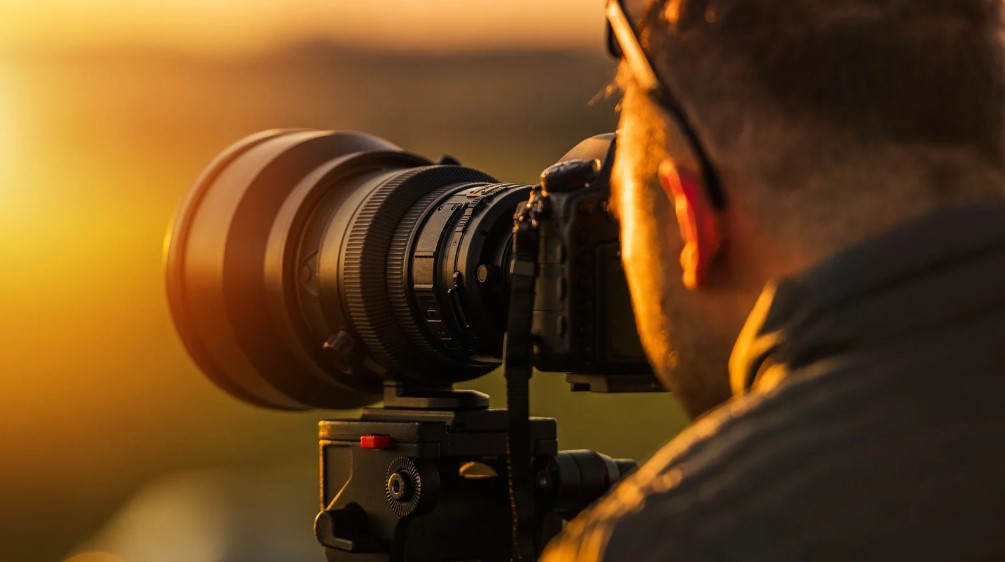
Enhancing Nature Photography with AI
Nature photography has always been about capturing the raw beauty of the outdoors, from stunning landscapes to close-ups of wildlife. With the advancement of artificial intelligence, photographers now have powerful tools to enhance their shots, bringing out colors, details, and textures that might not be visible to the naked eye.
While AI tools like ai clothes remover demonstrate the breadth of what AI can achieve in image manipulation, its applications in nature photography focus on enhancing rather than altering reality, allowing photographers to showcase the natural world in vibrant and compelling ways.
Let’s explore how AI is transforming nature photography, helping to preserve and highlight the beauty of the outdoors.
How AI is Enhancing Nature Photography?
AI Features for Enhancing Outdoor and Wildlife Shots

Capturing outdoor scenes can be challenging, as natural lighting, weather conditions, and movement of wildlife often require adjustments to reveal the best aspects of an image. AI provides tools that automatically optimize these elements, allowing photographers to focus on their creative vision while AI handles the technical enhancements.
Intelligent Exposure and Lighting Adjustments
In outdoor photography, lighting can vary drastically, affecting the clarity and impact of an image. AI-powered tools automatically analyze and adjust exposure levels, balancing highlights and shadows to ensure each part of the scene is visible and vibrant.
For example, in a sunrise landscape shot, AI can brighten darker foreground areas without overexposing the sky. This helps maintain a natural balance, bringing out every detail in both light and shadow.
Enhancing Sharpness and Detail in Wildlife Shots
Wildlife photography often involves capturing animals at a distance or in motion, which can result in slightly blurry images. AI tools can sharpen these images, emphasizing details like feathers, fur, or scales.
By identifying and enhancing textures, AI brings wildlife to life, making it possible to see the intricate details that make each animal unique. This capability is particularly valuable for photographers who need to capture sharp, detailed images of fast-moving or distant subjects.
Preserving Natural Beauty Through AI Tools
While enhancing photos, it’s crucial to preserve the natural beauty and authenticity of the scene. AI tools are designed to enhance, not overly alter, maintaining the integrity of nature’s colors, textures, and lighting. These tools provide subtle adjustments that bring out the best in nature shots without making them look artificial or heavily edited.
True-to-Life Color Adjustments
One of the main advantages of AI in nature photography is its ability to correct and enhance colors naturally. In a forest scene, for instance, AI can make greens more vibrant and the sky bluer without making the colors look oversaturated or fake.
By fine-tuning color balance and saturation, AI helps photographers bring out the hues and tones that reflect the true essence of nature, capturing the scene as it was experienced in real life.
Reducing Noise for Clearer Photos
Low-light settings, common in dawn or dusk photography, can introduce noise, reducing an image’s quality. AI tools are adept at identifying and reducing noise without sacrificing detail, resulting in cleaner, clearer images that still retain the natural textures and depth of the scene.
This is particularly useful for landscape and wildlife photography taken in challenging lighting conditions, where traditional editing could make the image look over-processed.
How AI Brings Out Detail and Color in Nature Scenes

AI excels at analyzing images to enhance fine details and vibrant colors, two elements crucial for impactful nature photography. By using machine learning algorithms trained on vast image datasets, AI can identify and emphasize elements that make each scene unique, from the subtle textures of rock formations to the vibrant colors of a flower in bloom.
Highlighting Fine Textures in Landscapes
Nature scenes often contain intricate textures that might go unnoticed without the right enhancements. AI can accentuate these details, whether it’s the rough texture of a mountain cliff, the delicate veins in a leaf, or the ripples on a lake’s surface.
These subtle touches add depth to an image, drawing the viewer into the scene and creating a more immersive experience.
Enhancing Sky and Water Elements
Skies and water often play a significant role in landscape photography, adding depth and mood to an image. AI can identify these elements and adjust them independently, enhancing cloud formations, intensifying sunset colors, or making water reflections clearer.
This selective enhancement helps create dramatic, eye-catching visuals without compromising the natural feel of the scene.
Boosting Contrast for Greater Depth
In nature photography, contrast is key to making elements stand out. AI tools can enhance contrast to add depth and dimension to a scene, making landscapes look more three-dimensional and vivid.
For example, in a dense forest shot, AI can darken the shadows and brighten the highlights, making the image more dynamic and visually appealing. This contrast enhancement draws attention to the main elements of the photo, guiding the viewer’s eye through the composition.
Environmental Photography Trends Using AI Enhancements

AI is also shaping trends in environmental photography, where the focus is on highlighting the beauty of nature and raising awareness about conservation. By enhancing photos in a way that remains true to their original essence, AI helps photographers emphasize the importance of preserving natural landscapes and wildlife.
Spotlight on Environmental Conservation
Environmental photographers use AI-enhanced images to communicate the urgency of conservation efforts. Enhanced images make it possible to showcase the natural beauty of endangered species and habitats in greater detail, inspiring viewers to engage with environmental issues.
AI’s ability to bring out fine details and colors means that these photos are more impactful, resonating with audiences on a deeper level.
Bringing Attention to Climate Change
AI tools are also used to document the impact of climate change, showing before-and-after scenarios of landscapes affected by human activity.
By enhancing photos to highlight changes in environments—like receding glaciers, deforested areas, or polluted rivers—AI helps to tell a visual story that is both informative and emotive. These images serve as a powerful reminder of what is at stake, making them invaluable in the fight for climate action.
Showcasing Natural Wonders with High Impact
From national parks to remote landscapes, environmental photography often aims to capture the awe-inspiring beauty of natural wonders. AI-enhanced images are used in travel magazines, nature documentaries, and online platforms to present these wonders in their full glory.
By enhancing colors, textures, and lighting, AI helps create images that captivate viewers and encourage them to connect with nature, even if they are viewing it from afar.
The Future of AI in Nature Photography

As AI technology continues to evolve, it’s likely that nature photographers will gain even more powerful tools to capture and enhance the beauty of the world around them.
Future AI advancements could include smarter scene recognition, allowing for even more tailored adjustments that align perfectly with each unique environment.
Personalized AI Suggestions Based on Scene Type
Future AI tools may become more scene-aware, offering personalized suggestions based on the type of nature scene being edited. For example, AI could detect that a photo is of a snowy landscape and adjust settings to enhance the cool tones and soft textures.
Similarly, it could recognize a desert scene and bring out warm tones and fine sand textures. This level of specificity would make it easier for photographers to achieve high-quality results tailored to each unique environment.
Real-Time Enhancements for On-the-Go Photography
As AI technology becomes more integrated with camera hardware, we may see real-time AI enhancements available directly on cameras or mobile devices.
This would allow photographers to preview AI-enhanced images as they shoot, making it easier to capture the perfect shot on the spot. Real-time AI adjustments could be especially useful for outdoor and wildlife photographers who often have to work quickly in unpredictable conditions.
Increased Focus on Ethical and Sustainable Photography
As nature photographers continue to use AI to showcase the beauty of the environment, there will likely be a growing emphasis on ethical and sustainable photography practices.
By using AI to enhance rather than alter, photographers can ensure that their images remain true to the natural world, inspiring a genuine connection between viewers and the environment. This commitment to authenticity will be essential as photography continues to play a role in environmental advocacy.
Conclusion
In conclusion, AI-powered tools have revolutionized nature photography, providing photographers with powerful features to enhance colors, details, and lighting.
From creating dynamic wildlife shots to preserving the authenticity of natural landscapes, AI helps photographers capture the world’s beauty in ways that feel both natural and impactful.
As technology continues to evolve, the future of nature photography with AI looks promising, offering new possibilities for highlighting the importance of our planet’s diverse ecosystems.
Author Profile

- Blogger by Passion | Contributor to many Business and Marketing Blogs in the United Kingdom | Fascinated with SEO and digital marketing and latest tech innovations |
Latest entries
 TechnologyMarch 31, 2025The Future of Text-to-Speech: Transforming Communication in Healthcare
TechnologyMarch 31, 2025The Future of Text-to-Speech: Transforming Communication in Healthcare TechnologyMarch 28, 2025Top-Rated Tools Every Modern Recruiter Needs in Their Toolkit
TechnologyMarch 28, 2025Top-Rated Tools Every Modern Recruiter Needs in Their Toolkit marketingMarch 21, 2025How Businesses Can Leverage YouTube Video Makers for Marketing & Ads?
marketingMarch 21, 2025How Businesses Can Leverage YouTube Video Makers for Marketing & Ads? Online BusinessMarch 21, 2025Feature Requests as a Growth Strategy: How User Insights Drive Product Innovation?
Online BusinessMarch 21, 2025Feature Requests as a Growth Strategy: How User Insights Drive Product Innovation?

